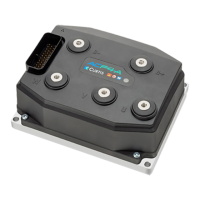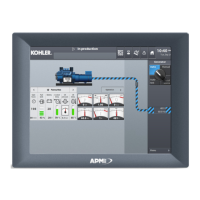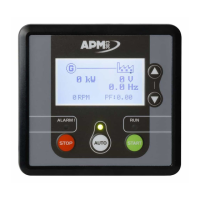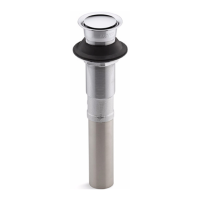6 — COMMISSIONING
pg. 181
Return to TOC Curtis AC F2-A, F4-A, F6-A Motor Controllers – FOS 4.5 – April 2022
To determine the SlipGain setting, use either of the following two methods. e load cell/draw
bar is the most accurate.
14.1 Configure the vehicle to measure stall torque, by using a load cell/draw bar test.
Note: Perform this test quickly to avoid excessive motor heating and provide the
most accurate results.
• First, turn o encoder fault detection.
Programmer: Motor Setup » Quadrature Encoder » Encoder Fault Setup » Fault Detection Enable (= Off ).
Test: While applying and holding full throttle, adjust SlipGain until the peak torque is measured.
When the SlipGain test is completed, re-enable encoder fault detection:
Fault Detection Enable = On.
14.2 Alternatively, use the vehicle as the “drawbar test” load by accelerating the motor to
a predetermined speed (rpm)—with the quickest time corresponding to the optimum
SlipGain. is method uses the controller’s time-to-speed function. e test-acceleration
will be at full controller current.
Begin by setting the corresponding Accel Rates to very fast values, based upon the application’s
Control Mode.
Speed Mode Express: Accel Rate.
Speed Mode: Full Accel Rate LS, Full Accel Rate HS, Low Accel Rate.
Torque Mode: Accel rate.
Next, set the Capture Speed 1 parameter to an rpm encompassing the motor’s desired maximum
torque range. e monitor item, Time to Speed 1, will record the time taken for the vehicle (motor)
to go from zero rpm to the programmed Capture Speed 1 during its most recent acceleration.
Programmer: Application Setup » Vehicle » Speed/Dist/Accel » Performance Metrics » Capture Speed 1.
Programmer: System Monitor » Vehicle » Speed/Dist/Accel » Performance Metrics » Time to Speed 1.
Test: From a stop, accelerate the vehicle through the predetermined speed. e timer starts counting
when full throttle is applied, and stops counting when the speed is reached. A built-in trigger will
allow the test to begin again once the vehicle comes to a stop and the throttle is reengaged, so be sure
to note the value of the test rst before accelerating away in subsequent runs. Each time, adjust the
SlipGain value until the Time to Speed 1 is minimized.
Programmer: Motor Setup » Induction Motor (ACIM) » Characterization Tests » SlipGain.
Run this test repeatedly over the same stretch of at or uphill ground. Loading the vehicle will
improve results, the idea being to have the motor produce maximum torque as in the drawbar
method. Work quickly, to avoid excessive motor heating and to obtain the most accurate results.
15. Run the FW Base Speed test (do not skip this critical step).
Set the FW Base Speed to 6000 rpm. Run the test with batteries that have a reasonable charge.
Programmer: Motor Setup » Induction Motor (ACIM) » Field Weakening » FW Base Speed.
Set the Accel Rates to be very fast, so that the vehicle will be accelerating at full current during
the test. From a stop, quickly apply full throttle to accelerate to a high speed. Aer the motor
settles at a speed for a moment, release the throttle to stop the test run. Note the value of the
Base Speed Captured and enter this value for the application’s FW Base Speed setting.
Programmer: Motor Setup » Induction Motor » Field Weakening » Base Speed Captured.

